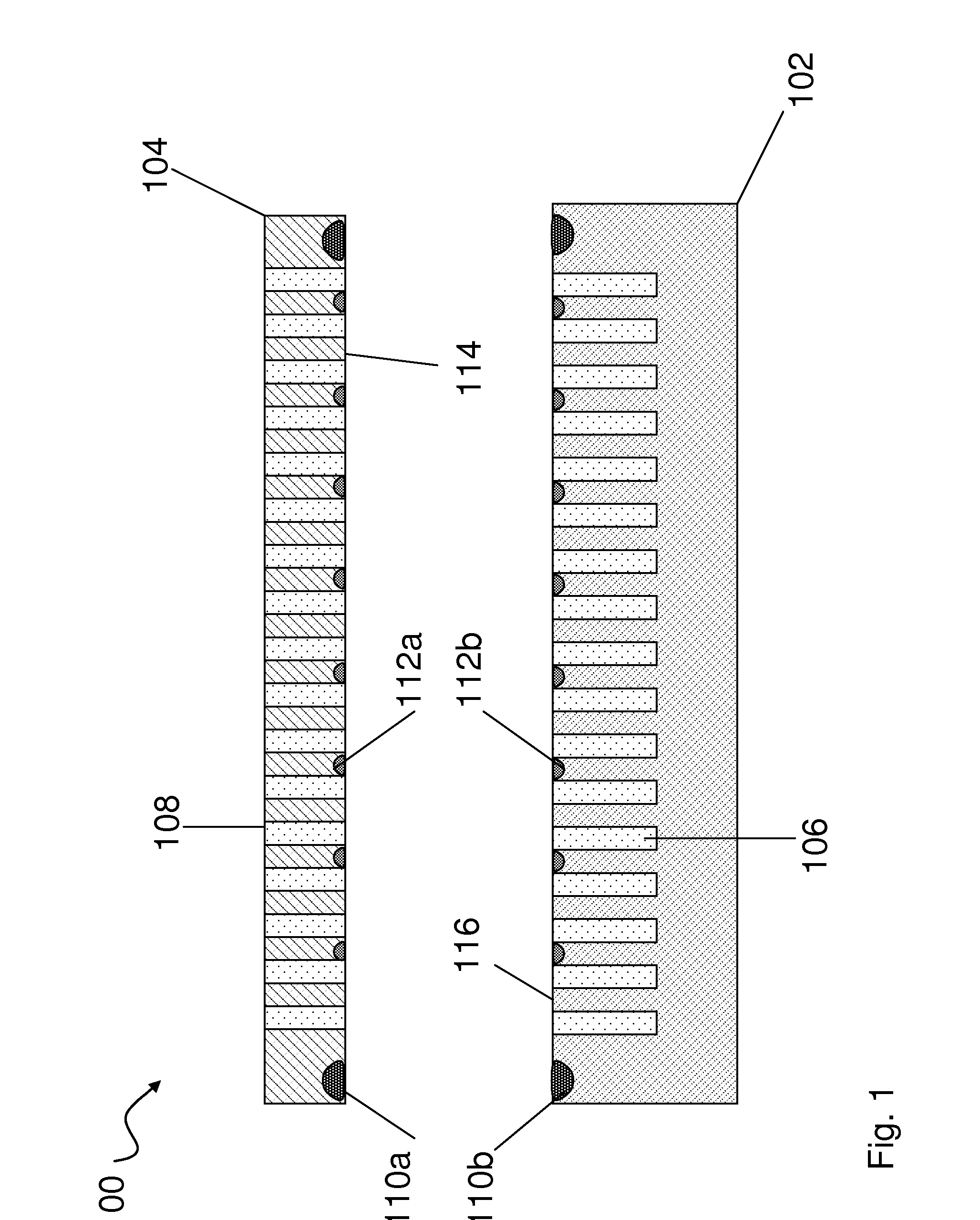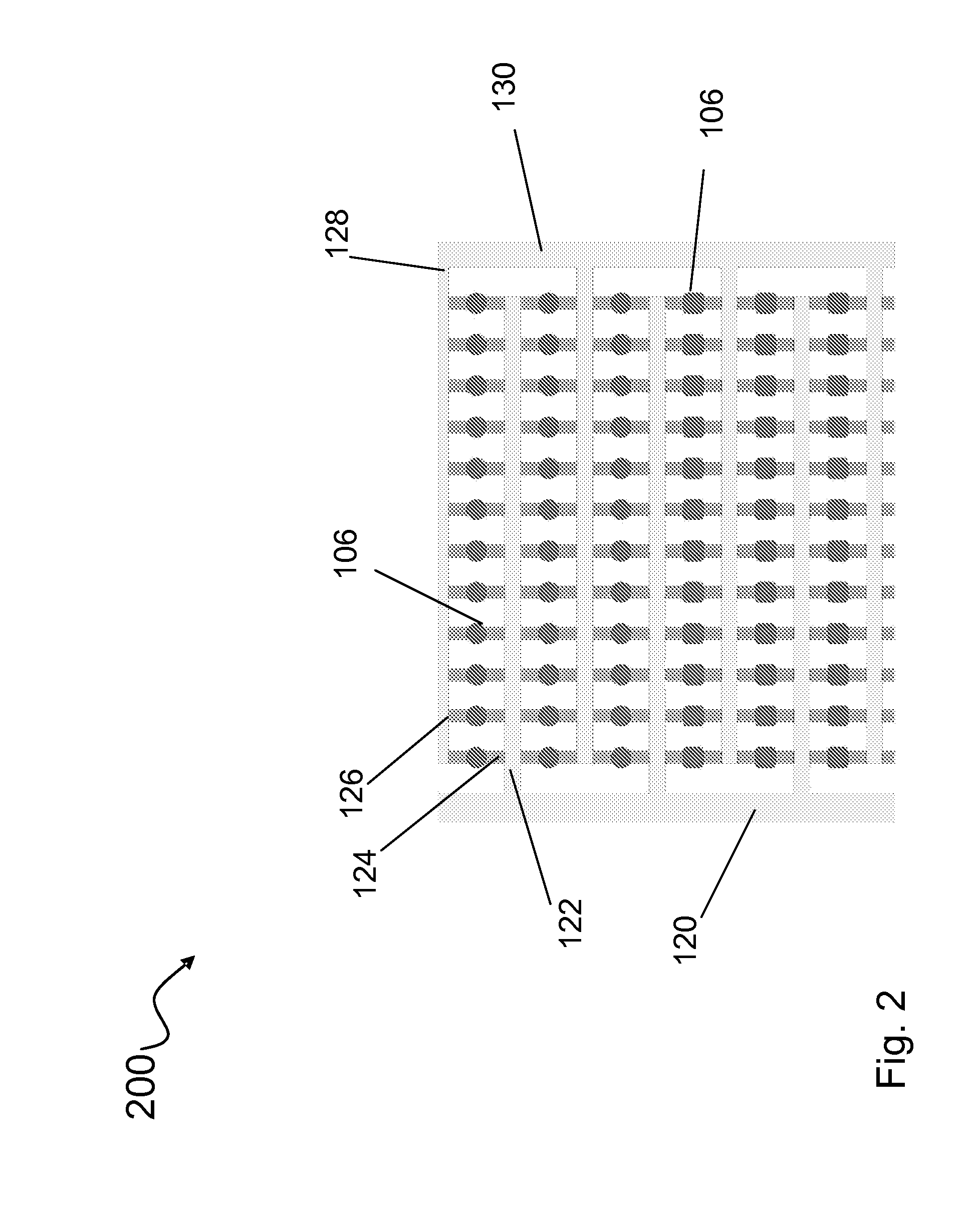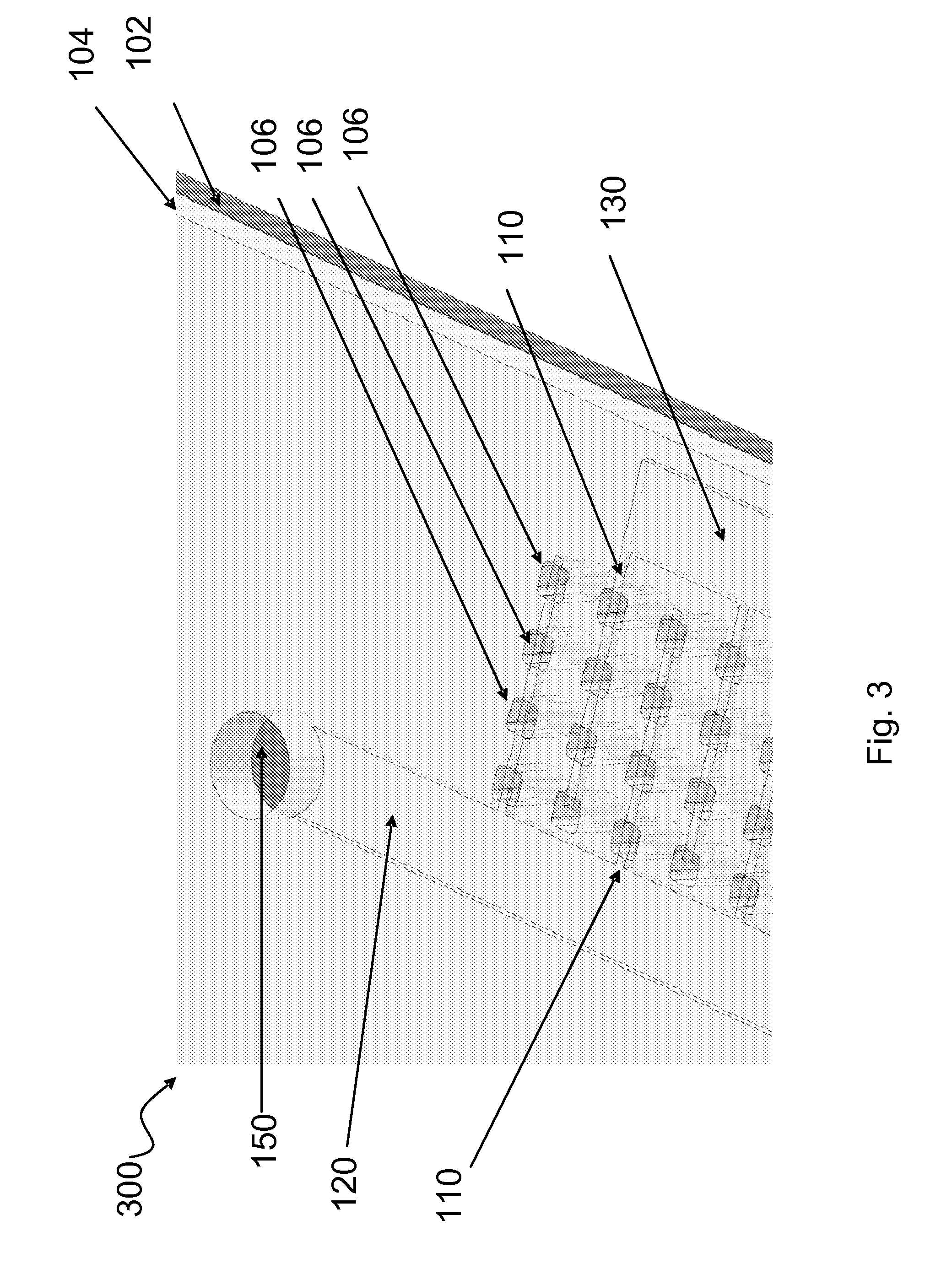Systems and methods for active microfluidic cell handling
- Summary
- Abstract
- Description
- Claims
- Application Information
AI Technical Summary
Problems solved by technology
Method used
Image
Examples
Embodiment Construction
[0033]A method and system for providing a cell support system are described. In one aspect, the method and system include providing a first block, a second block coupled to the first block, and a plurality of microfluidic channels. The first block includes a plurality of cell wells therein. The second block includes a plurality of through holes therethrough. In one aspect, the through holes may be between opposing faces of the second block. However, in another aspect, the through holes may not be between opposing faces. The plurality of holes are in fluid communication with at least one corresponding cell well of the plurality of cell wells. The plurality of microfluidic channels are in fluid combination with at least a portion of the plurality of cell wells and are configured to provide an active fluid flow with the portion of the plurality of cell wells. In another aspect, the method and system include investigating properties of a collection of cells. In this aspect, the method a...
PUM
 Login to View More
Login to View More Abstract
Description
Claims
Application Information
 Login to View More
Login to View More - R&D
- Intellectual Property
- Life Sciences
- Materials
- Tech Scout
- Unparalleled Data Quality
- Higher Quality Content
- 60% Fewer Hallucinations
Browse by: Latest US Patents, China's latest patents, Technical Efficacy Thesaurus, Application Domain, Technology Topic, Popular Technical Reports.
© 2025 PatSnap. All rights reserved.Legal|Privacy policy|Modern Slavery Act Transparency Statement|Sitemap|About US| Contact US: help@patsnap.com



